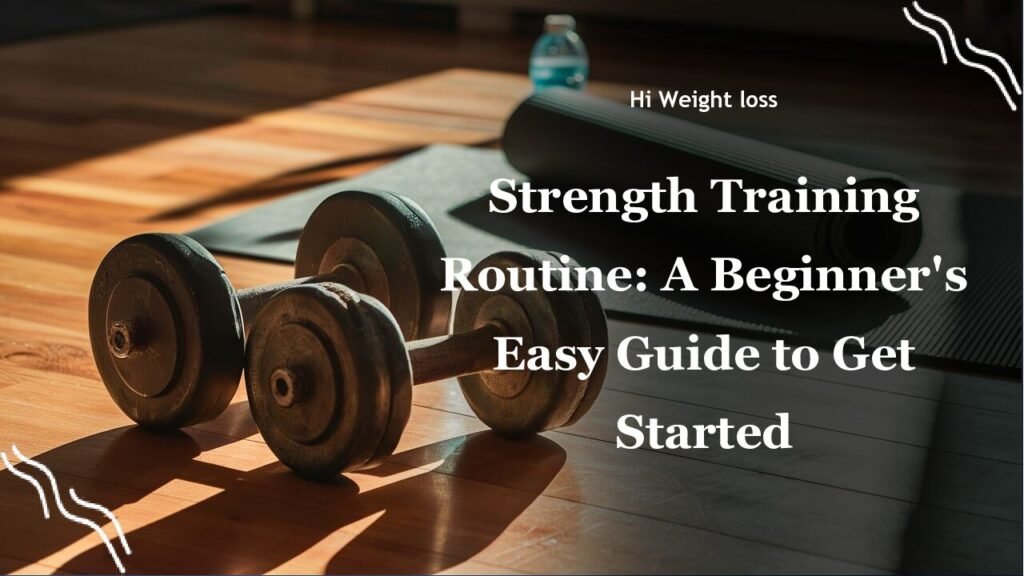“`
Starting a weightlifting journey can feel like navigating a maze, especially with so many programs to choose from, and you might be wondering if the popular 5/3/1 workout program is right for you, particularly if you are new to the game. It’s tempting to jump into an advanced routine, but doing so too early can lead to frustration and potentially injury. This article will explore why the 5/3/1 program, while effective for some, is generally not the best choice for beginners and what alternatives might serve you better, ensuring you build a solid foundation for long-term success.
Is 5/3/1 Good for Beginners? Understanding the Program’s Challenges
The 5/3/1 program, created by Jim Wendler, is a well-respected strength training program. It’s known for its focus on compound lifts and its gradual progression model. However, its intricacies can be overwhelming for those who are new to lifting. When I first started weightlifting, I remember feeling lost just trying to figure out what a proper squat even looked like, let alone a complex program like 5/3/1.
Why Linear Progression is Key for Beginners
Beginners thrive on linear progression, where they add weight each session or each week. This consistent, incremental increase is ideal for quickly building strength when your body is still adapting to the stress of weight training. The 5/3/1 program, however, adds weight every four weeks, which may not be optimal for new lifters eager to see faster gains.
Think of it like learning to ride a bike; you wouldn’t start on a mountain trail, you’d begin on a flat surface. Linear progression allows your muscles and nervous system to learn the movements safely and build a baseline of strength and coordination before moving to more complex routines.
The Complexity of 5/3/1 and its Variations
The 5/3/1 program isn’t a rigid structure; it’s more of a philosophy, which can be difficult to grasp if you’re new to lifting. There are many variations and tweaks that experienced lifters utilize, and while this flexibility is great for those who understand their bodies well, it’s a recipe for confusion for beginners. It requires a deep understanding of strength training principles and how to apply progressive overload effectively, something most beginners just don’t have.
I’ve seen many beginners get lost in the variations, trying to figure out which template is best for them and end up feeling more confused than motivated. It’s like trying to assemble a complex piece of furniture without reading the instructions first – it can quickly become frustrating.
The Necessity of Knowing Your 1RM
The 5/3/1 program relies heavily on knowing your one-rep maximum (1RM), the heaviest weight you can lift for a single repetition. While this is standard procedure for experienced lifters, accurately determining your 1RM is a skill in itself. For beginners, trying to find their 1RM without proper form can be risky. It also adds pressure to what should be a learning and exploratory process. This program requires knowing your 1RM on core lifts, which can be challenging for beginners.
When I first started, I remember being terrified to even attempt a 1RM, worrying about potential injury, but it’s a key component of the 5/3/1 methodology. Without a reliable 1RM, you can’t correctly implement the program, which may lead to inaccurate results or potential setbacks.
De-loading Weeks and Assistance Exercises
The 5/3/1 program incorporates de-loading weeks, where you intentionally lift lighter weights to allow your body to recover, but this concept can be confusing for those new to strength training. Additionally, while assistance exercises are beneficial, they also require an understanding of how to integrate them into your program effectively, without overtraining. The 5/3/1 program offers a variety of assistance exercises, which can be beneficial, but also requires a good understanding of how to integrate these exercises effectively into the program.
I’ve seen beginners get confused about when and how to deload, and the concept of intentionally taking a step back can be counterintuitive. It’s important to have a solid grasp of training principles before diving into complex strategies like deloading.

A Table: Comparing Beginner-Friendly Programs and 5/3/1
To give you a clearer picture, let’s compare what’s beneficial for beginners and how the 5/3/1 program contrasts:
| Feature | Beginner-Friendly Programs | 5/3/1 Program |
|---|---|---|
| Progression | Linear (adding weight weekly or every session) | Non-linear (adding weight every 4 weeks) |
| Complexity | Simple, with few variations | Complex with multiple variations |
| 1RM Requirement | Not essential; can use estimated weights | Requires accurate 1RM for calculations |
| Deloading | May not be necessary at first, or very simplified | Included and needs precise planning |
| Assistance Work | Simple, focus on core exercises | Wide range of exercises, complex planning |
Why Not Start With 5/3/1?
When you’re just starting your weightlifting journey, the last thing you need is a complicated program that’s difficult to understand. Beginner-friendly programs focus on building fundamental strength and teaching proper form, which are crucial for long-term success. Programs like Starting Strength or StrongLifts 5×5 are designed specifically for beginners and prioritize consistency and linear progression. The 5/3/1 program requires a good understanding of strength training and progressive overload.
It’s not that 5/3/1 is a “bad” program, it just might not be the most suitable option for those who are beginning. Think of it like learning to drive, you wouldn’t start with a race car on a professional track, would you? You’d start with a basic car on a quiet street to build your skills.
Suitable Alternatives for Beginners
If you are new to weightlifting, consider these alternatives:
- Starting Strength: A simple program that prioritizes compound movements and linear progression.
- StrongLifts 5×5: Another great option with a focus on basic barbell exercises and frequent weight increases.
- A simple full-body routine: Focus on exercises like squats, bench presses, rows, and overhead presses with light weights and a focus on form.
These programs offer simplicity and are designed to maximize gains in the early stages of training. They’ll provide a strong base, and then, after a while, you could consider other programs like 5/3/1, if you want.
Conclusion
While the 5/3/1 workout program has a good reputation for building strength for intermediate and advanced lifters, it’s not the best choice for beginners, and it would be a big mistake to think it’s a great fit for those who have zero experience with weightlifting. Its complexity, need for an accurate 1RM, and non-linear progression style can be overwhelming. It is not recommended for beginners. Beginners should start with simple, linear progression programs that focus on mastering proper form and building a strong foundation. The early stages of training are crucial for long term success, so it makes sense to make your time count. By choosing a more suitable starting point, you’ll be well on your way to achieving your strength goals. So instead of getting frustrated, why not take an easier first step?
Consider starting with one of the beginner-friendly programs mentioned, like Starting Strength or StrongLifts 5×5. These programs are designed to set you up for success and make sure you’re learning and progressing in a safe and effective way. If you are serious about your fitness, share this article with anyone you know who is new to weightlifting, to make sure they are also doing the right things for themselves.
FAQ
Can beginners eventually use the 5/3/1 program?
Yes, once you have built a solid base of strength and are familiar with the main barbell exercises, the 5/3/1 program can be a good option.
Is it harmful to start with 5/3/1 as a beginner?
Not necessarily harmful, but it may lead to slower progress, confusion, and frustration because of its complexity. It’s important to focus on simpler programs to build a solid foundation first.
How long should beginners stick to a linear progression program?
Beginners should stick with linear progression programs until they stop making consistent gains every week. This can vary for different people, but around six months is a reasonable amount of time for most people.
What should beginners do if they want to try a program like 5/3/1?
If you’re curious about 5/3/1, it’s best to spend some time getting comfortable with the fundamental lifts. Learn to squat, bench press, overhead press, and deadlift correctly before jumping into the 5/3/1 program.
Are there any adaptations of 5/3/1 that are suitable for beginners?
While there are some less complex variations, the core of the program is still based around understanding your one-rep max and implementing deloads, so even the simpler versions are usually not ideal for beginners. It is often better to stick with programs designed for beginners.
“`



